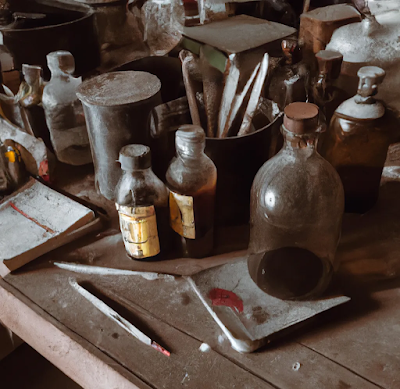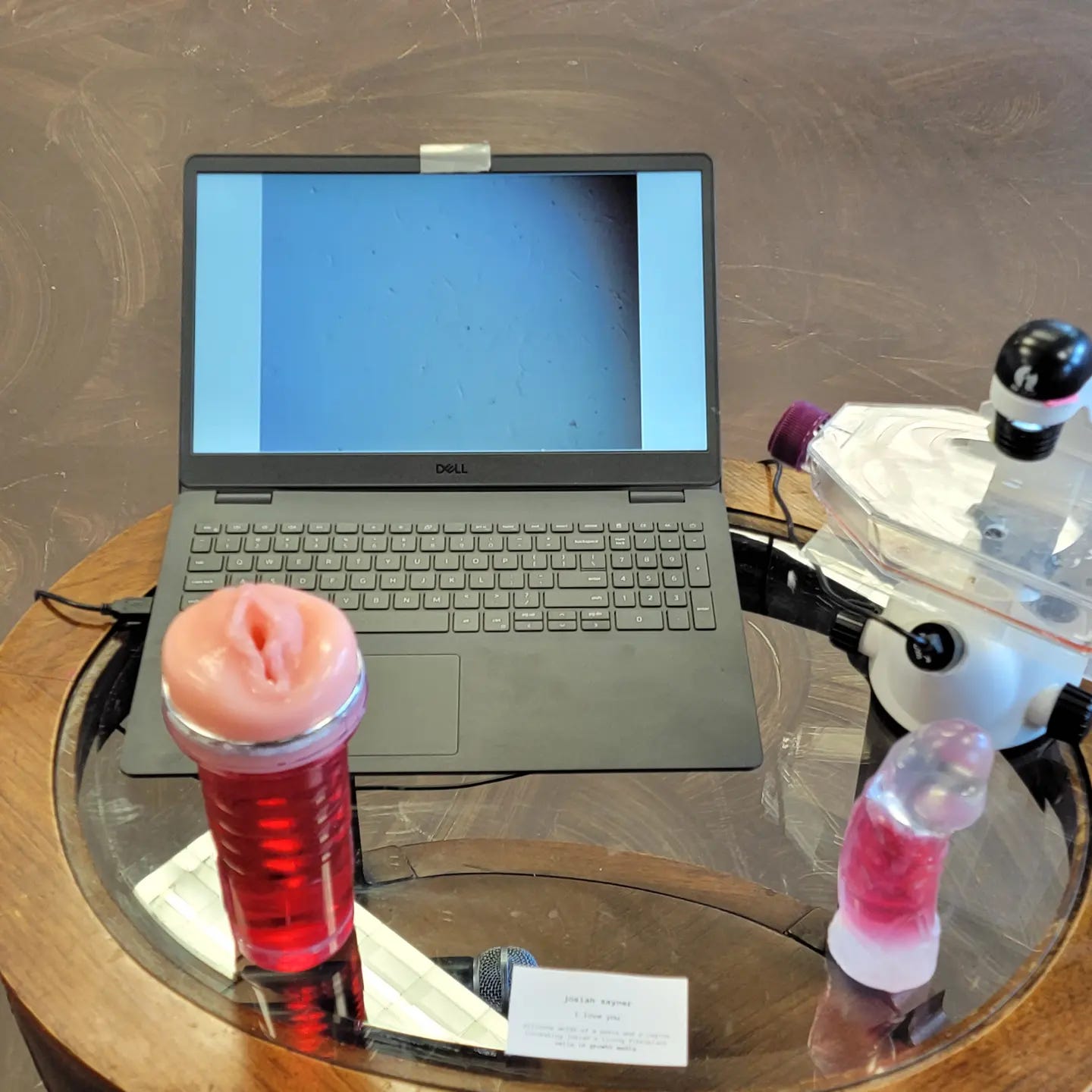I’ve never been much of a prepper. My family has though. My biological father was an OG prepper back in the 1980s. Weapons and everything. Then in 1999 when my uncle, who just so happened to be the Pastor of the church we attended, said that the Y2K computer bug was going to cause an economic meltdown and computer systems would cease to function, my family did a little stockpiling.
Since then, I have been a little hesitant to be a prepper. I feel like I have already dodged two apocalypses and I shouldn’t push my luck. A few months ago, I had this urge to see how difficult it would be to make the penicillin antibiotic by growing Penicillium. Surprisingly, It was easy. You add the fungus to some liquid culture media and it secrets the antibiotic into the liquid. Well, that’s cool. Me and the team started dreaming about how we could drive around in abandoned ice cream trucks and create a post-apocalyptic drug empire by selling people antibiotics. What else is possible then? What else would people need in a post apocalyptic biohacking kit?
While things like clothes are going to be plentiful, thanks to Shein and guns, thanks to the NRA. Food, medicine and electricity will eventually be much harder to get. The cool thing is that they can all be produced biologically. To this end we are releasing a apocalypse prepper kit at The Open Discovery Institute that contains biological organisms in hermetically sealed containers to help you survive the apocalypse.
Medicine
Antibiotics
Some estimates say that Penicillin alone has saved over 200 million lives and adds 10 years to the global life expectancy. The cool thing about antibiotics is that a number of the original antibiotics were discovered because they are produced in naturally occurring in microorganisms. Many modern antibiotics are more complicated and developed through chemical synthesis methods or modifications of some of these original antibiotics. But the truth is that despite the fear mongering of antibiotic resistant infections, a lot of these original antibiotics still work. That’s not to say they work for all infections and all organisms but they do a pretty good job.
So why don’t we use penicillin nowadays? There are a lot of reasons but most of them stem from the fact that modern antibiotics that are really similar to penicillin work across a broader spectrum and have less side effects and allergies. The great thing about penicillin is that it can be easily produced with the fungus Penicillium chrysogenum which is included in our Prepper kit.
It’s pretty simple, add some Penicillium fungus to water and nutrients, and the penicillin antibiotic is secreted into the liquid. Because the fungus grows on top of the liquid, surface area is important, i.e. you should use something that is long and flat rather than tall and skinny. Producing antibiotics can take 1-4 weeks depending on growth conditions. Generally, when the Penicillium mat starts to become the thickness of a pencil or so, you should definitely have antibiotics. These mats can be cut up and will regrow when used to inoculate new liquids.
In our experiments, we found that you can grow penicillium fungus on any liquid that contains some amount of nutrients. What does nutrients mean? Generally, all organisms need a carbon source, a nitrogen source and micronutrients. Sugar, honey, fruit or any plant matter generally will contain sugar but meat doesn’t. Nitrogen is less important than carbon and usually anything that isn’t pure sugar also contains nitrogen, so not much of a worry. Same with micronutrients. Soil is also a good source of micronutrients, so sprinkle and little in to help with the growth and antibiotic production no matter recipe you use for your liquid.
Post apocalyptic growth media ideas for penicillium
Sugar, dirt and water
Mashed or ground up fruit and water
Boiled vegetation, cool before use
Milk(whether old or not)
Honey and water
Most non-meat foods can be used mixed with water and probably pretty much all processed or canned goods
Because penicillin doesn’t work against all infections we also decided to include Streptomyces griseus in our Prepper kit which is a bacteria that produces the antibiotic streptomycin.
Streptomycin works on a broad spectrum of bacteria and in certain doses can even work on some fungi. It is a good complementary antibiotic to penicillin. Despite being bacteria it’s growth and antibiotic secretion are very similar to Penicillium. You can follow the same steps outlined above for growth and production of Streptomycin.
Other medicines
Cancer drugs like Taxol come from the bark of yew trees and while yew trees aren’t included in our Prepper Kit (obviously, it’s a tree). It’s a good thing to know.
Insulin is a very important drug to many people alive today. Originally, insulin was obtained from animal pancreases, but now it is produced through genetically modified organisms. A goal of ours is to eventually include a method and genetically modified organism that can produce insulin. It’s a work in progress.
Food
Obviously, plants are a great source of food. But if you’re one of those people who thinks that you just plant a tomato seed and magically, weeks later you have food it’s not gonna happen. Farming takes planning, timing and work. Not to mention it requires that you be in a single location for an extended period of time. Our Prepper kit is for when you need food in weeks, not months. When you might not have lots of sunlight or water. Or maybe just want to supplement your diet. Organisms like algae and mushrooms can provide a very reasonable diet and are very easy to produce and require very little care from you.
Mushrooms
For our Prepper kit we chose one of the easiest to grow mushrooms, Oyster mushrooms. They are an excellent source of protein, fiber and potassium. Oyster mushrooms can be grown on almost any material that contains cellulose. Examples of things you can grow oyster mushrooms on are clothing, books, decaying organic matter, natural fiber furniture like couch cushions or curtains, and so much more. The great thing is that mushrooms don’t require sunlight. So if you’re trapped in your bunker somewhere or there is nuclear winter, you can produce a consistent source of food. Given the right conditions, these mushrooms will take only 2-4 weeks to fruit. Mushrooms also store well after being dried out and the spores that form underneath the cap are easy to store for growing more mushrooms.
Algae
Algae is seriously one of the best food sources and one of the easiest to farm. It contains fats which can be hard to come by, protein and calories in abundance. The strain of algae included in our Prepper Kit is Chlorella vulgaris. We chose Chlorella because it is really good at growing without the need of external supplements like many algae. Literally, they only require water and sunlight to grow. Depending on growth conditions, the doubling time for the algae is 3-4 days so once you get up a good size culture you can be churning out lots of algae. Algae doesn’t grow well in tap water, but you probably won’t have access to tap water after some catastrophe. Rain water, lake/pond/river water or any water that comes from the environment works best. If you must use tap or distilled water, make sure that you add soil or some form of nutrient source like those listed above for growing other organisms. The cool thing about algae is that you are really only limited by your container size. A pool filled with rainwater and a good starter culture size and you can produce an abundance of food. Run the water through a fabric to collect the algae and dry it for long-term storage.
Electricity and Chemistry
Electricity is going to be hard to come by and solar panels will eventually break down and batteries will run out. Fuel can definitely be generated by creating and distilling alcohol, but since yeast is so abundant in our natural environment I imagine most people won’t need a source of yeast. I have a feeling that batteries and electricity will eventually be in short supply, so being able to create batteries from scratch will become very important. An electrochemical battery can be created by combining metals and acid. Where do you get acid from? Natural sources of acid can be hard to come by but there are certain bacteria that will happily produce acetic acid(also known as vinegar) from sugar. In our Prepper kit we included Bacillus amyloliquefaciens. This bacteria has the added ability to produce thick biofilms that can be used as biomaterial textiles for clothing or fabric.
A wet pile or voltaic pile battery can easily be made by sandwiching metals between acetic acid soaked pieces of paper or cardboard or similar. A battery like this can be made as easily as sanding down one side of a modern penny to expose the zinc and leaving the other side copper then stacking the pennies in the same orientation separated by paper soaked in acetic acid. This can produce around 0.5v per penny at low current but enough to power things like LED lights.
Acetic acid can be used in a wide variety of synthesis methods in chemistry including the synthesis of aspirin. Take some salicylic acid from plant leaves, some hydrochloric acid from an animal stomach and acetic acid and you can make some amounts of aspirin.
As we explore this world of post apocalyptic biohacking we will continue to add more organisms to these kits but for now we think we have done a pretty good job in exploring the initial landscape of biohacking the apocalypse.


